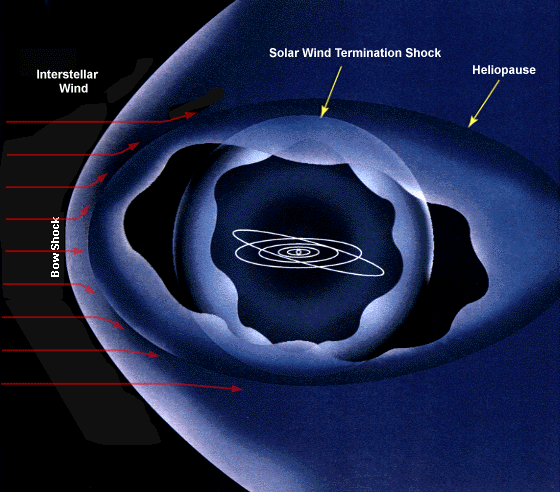

Caption: "The heliopause is the boundary at ∼ 120 AU from the Sun between the heliosphere (i.e., the solar magnetosphere and stellar-wind bubble (AKA astrophere)) and the interstellar medium (ISM) adjacent to the Solar System. As the solar wind approaches the heliopause, it slows suddenly, forming a shock wave called the termination shock of the solar wind." (Slightly edited.)
The termination shock is an inward-going shock wave from the heliopause. There is also an outward-going shock wave: a bow shock formed as the heliosphere plows through the adjacent ISM.
Features:
To be exact, Voyager 1 (1977--2030s) crossed the heliopause 2012 Aug25 at 121 AU from the Sun (see Wikipedia: Heliosphere: Heliopause; Wikipedia: Voyager 1: Heliopause). Voyager 2 (1977--2030s) crossed the heliopause 2018 Nov05 at 119 AU from the Sun (see Wikipedia: Heliosphere: Heliopause; Wikipedia: Voyager 2: Interstellar mission).
It's likely to be a rather complicated story, and so we will NOT go into it further.